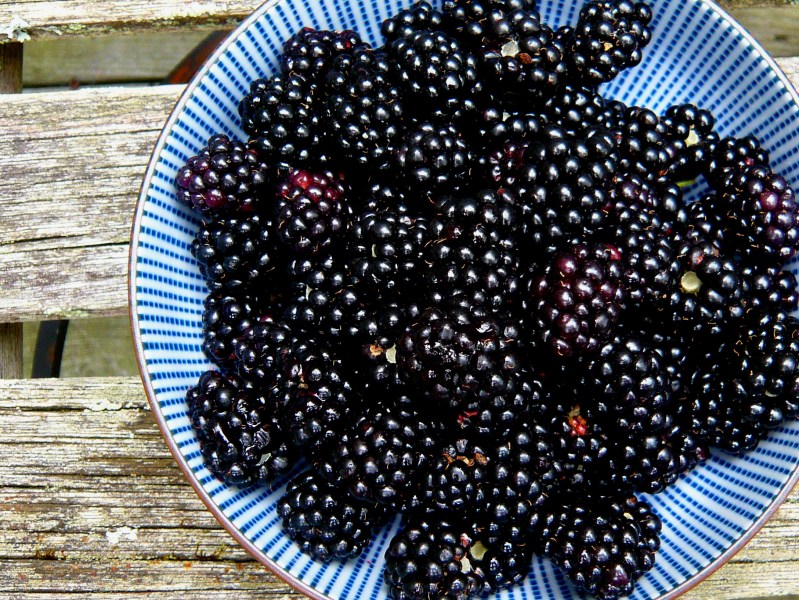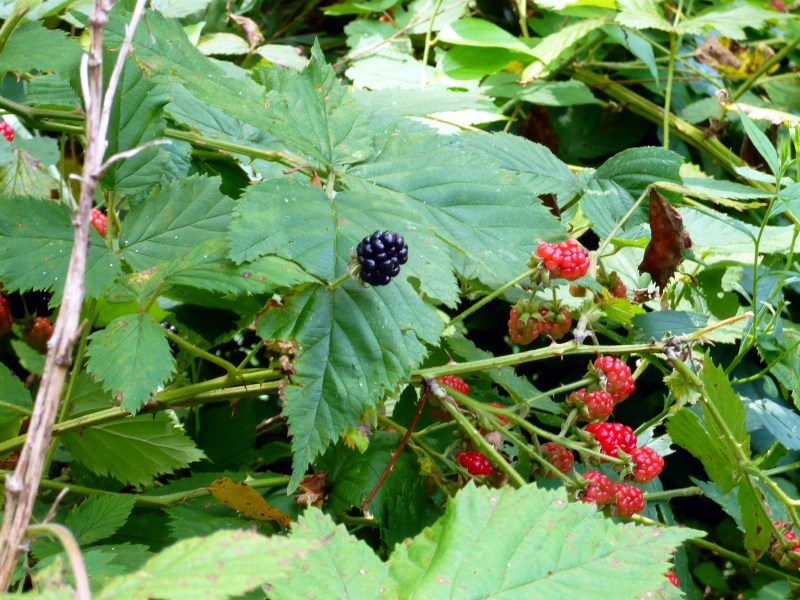 How cool is my yard? I’ll tell you how cool; I went out today and not only picked the last of the season’s wineberries, from a few canes that I discovered wrapped around a tree in the side yard, but the first of the season’s blackberries, from several fat canes that grow underneath our picture window.
How cool is my yard? I’ll tell you how cool; I went out today and not only picked the last of the season’s wineberries, from a few canes that I discovered wrapped around a tree in the side yard, but the first of the season’s blackberries, from several fat canes that grow underneath our picture window.
According to my trusty Wildman Steve Brill foraging guide, there are several species of blackberry that grow throughout North American. It appears that the ones in my yard are common blackberries (Rubus allegheniensis), with large, woody, arching canes and short, stiff thorns. The leaves are sharp-toothed, pointed leaflets, 3 to 7 inches long, and pale green to white underneath. Each leaflet has three to five leaves. 
Blackberries have no poisonous look-alikes; in fact, the only close look-alike is the wild black raspberry, which is smaller, sweeter, and hollow, like a thimble, when you pick it. Blackberries are larger and the core of the fruit is solid when you pick it.
Blackberries grow in many habitats; dry, sunny inland areas and beaches, disturbed soil, like at the edge of roadways, fire roads, trails or train tracks, on mountain slopes and young woodlands, and in wetlands and thickets (not to mention my yard). In my yard, the berries ripen in early-mid August; they are running a little late this year, due to the lack of abundant sunshine this summer, so peak season is probably still a week or two away. Next time you are out for a walk in the neighborhood or the woods, keep your eyes peeled – it is much easier to spot the red berries before they ripen and turn black, when they fade into the shadows and become much more difficult to spot. Happy foraging!

Pingback: Quick Fact: TIL: Blackberries have no poisonous look-alikes..Ref: https://localkitchenblog.com/2009/08/12/wild-blackberries/... - Quick Facts
Pingback: The Foolproof Four: The 4 Easiest Wild Berries to Forage - Online Mall
Pingback: The Foolproof Four: The 4 Easiest Wild Berries to Forage - RV Lyfe